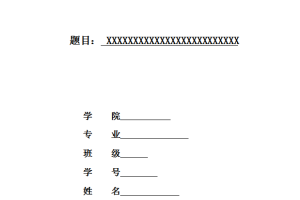Abstract
Alice’s Adventures in Wonderland is a children’s literary works published in 1865, which is written by a famous British writer Lewis Carroll. It tells a story of a girl named Alice who chases after a rabbit wearing a suit of vest as well as with a pocket watch in hand into a fantasy world through a rabbit hole, then encounters a series of indescribable things. Since its publication, the book has gained a vast of readers and has maintained its influence in the history of literature ever since. The romanticism of Alice’s adventures makes the children feel happy, at the same time, the internal reality it reveals and its deep connotations also make the adult fondle admiringly.
This paper studies the romanticism and authenticity of the story mainly from the following three aspects: first, we discuss the origin of the fantasy from the background of the story in which it happens. Second, we reserach the romanticism and authenticity of the story through exploring Alice’s adventures in wonderland designed by Carroll. At last, we probe into the authenticity of the story through Alice’s back to reality.
Key words: Alice, wonderland, romanticism, authenticity
Table of Contents
Abstract…………………………………………………………………………1
Introduction……………………………………………………………………2
- The Victorian Period…………………………………………………………… 3
- View on children …………………………………………………………4
- Fantasy……………………………………………………………………4
- An introduction of the author and the book…………………………………………….5
- The romanticism and authenticity of Alice’s adventures in wonderland…… 5
3.1Rmanticism………………………………………………………………… 5
3.1.1 The water making people smaller………………………………………6
3.1.2 The cake making people bigger…………………………………………6
3.1.3 The invisible cat…………………………………………………………7
3.1.4 The caterpillar spitting tobacco …………………………………………7
3.2 Authenticity…………………………………………………………………8
3.2.1The absurdity and chaos of the adult world……………………………… 8
3.2.2 Feminine discourse……………………………………………………… 9
3.2.3 A shift from feminine dicourse to selfhood ……………………………10
3.Conclusion………………………………………………………………… 11
References…………………………………………………………………… 12
Acknowledgements…………………………………………………………… 13





